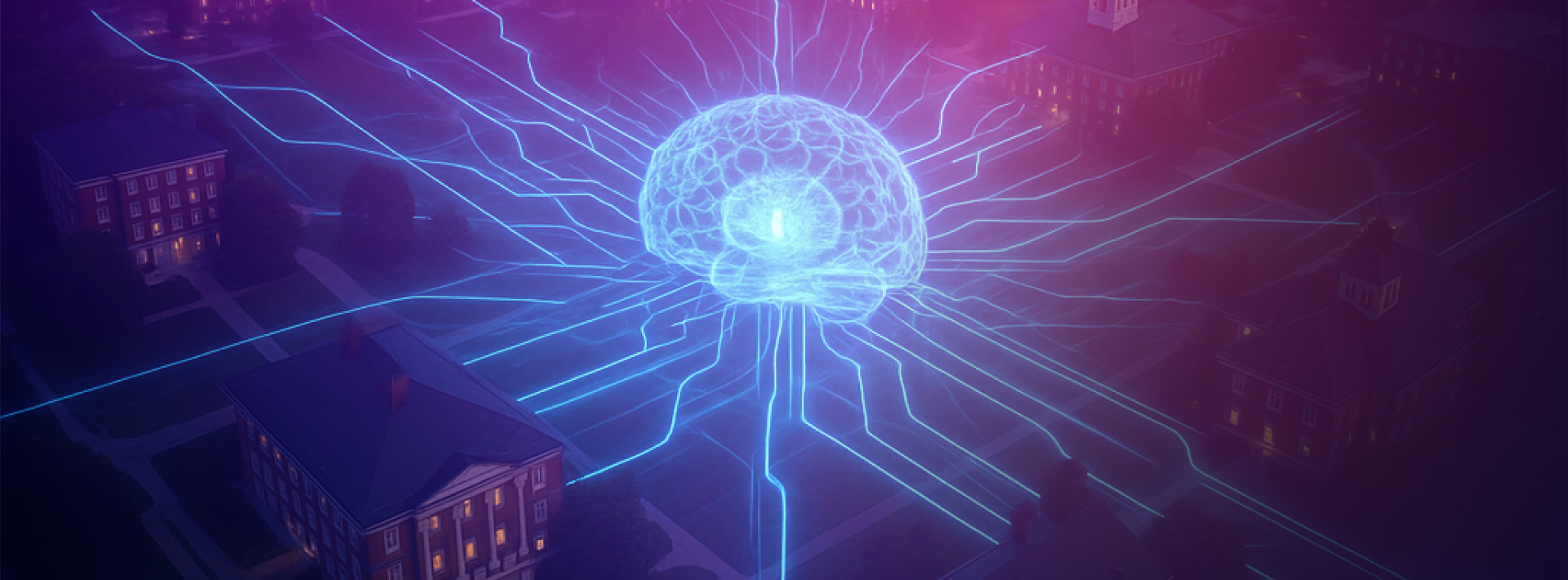A University Without a Nervous System
Walk through the back offices of most universities, and you will see the challenge. Admissions runs on one platform, advising on another, learning management on a third, and academic affairs on a fourth. Each system functions, yet little connects them. Students feel the gaps when financial aid processing is delayed, academic records are incomplete, and support processes remain confusing and slow. Leaders feel it in the cost of complexity and the weight of compliance.
Higher education institutions typically manage dozens of disconnected systems, with IT leaders facing persistent integration challenges that consume substantial staff time and budget resources while creating operational bottlenecks that affect both student services and institutional agility.
For decades, CIOs and CTOs have been tasked with stitching these systems together. Progress came in patches, with integrations here and dashboards there. What emerged looked more like scar tissue than connective tissue. Patchwork technology blocks digital transformation in higher education, and leaders now seek infrastructure that can unify rather than just connect.
The Rise of Agentic AI as Connective Tissue
Agentic AI wires the university together. Acting like a nervous system, it routes information and triggers actions throughout the institution, coordinating workflows through intelligent routing and contextual decision-making. Unlike traditional automation that follows rigid rules, agentic AI systems can make contextual decisions, learn from outcomes, and coordinate across multiple platforms without constant human oversight.
In practice, this means a transfer request automatically verifies transcripts through the National Student Clearinghouse, cross-references degree requirements in the SIS, flags discrepancies for staff to review, and updates student records, typically reducing processing time from 5-7 days to under 24 hours while maintaining accuracy. It means an advising system can recognize a retention risk, trigger outreach, and log the interaction without human staff piecing the puzzle together by hand.
Agentic AI needs a strong foundation. That foundation is cloud-native infrastructure for universities that’s built to scale during peak demand, enforce compliance, and keep every action visible. With this base in place, universities move from pilot projects to production systems. The result is infrastructure that holds under pressure and adapts when conditions change.
The Brain Still Decides
A nervous system does not think on its own. It carries signals to the brain, where decisions are made. In the university context the brain is still human, made up of faculty, advisors, administrators, and executives.
This is where the design philosophy matters. Agentic AI should amplify human capacity, not replace it. Advisors can spend more time in meaningful conversations with students because degree audits and schedule planning run on their own. CIOs can focus on strategic alignment because monitoring and audit logs are captured automatically. The architecture creates space for judgment, and it also creates space for human connection that strengthens the student experience.
However, this transition requires careful change management. Faculty often express concerns about AI decision-making transparency, while staff worry about job displacement. Successful implementations address these concerns through clear governance frameworks, explainable AI requirements, and retraining programs that position staff as AI supervisors rather than replacements.
What Happens When Signals Flow Freely
When agentic systems begin to carry the load, universities see a different rhythm. Transcript processing moves with speed. Advising interactions trigger at the right time. Students find support without friction. Leaders gain resilience as workflows carry themselves from start to finish. What emerges is more than efficiency. It is an institution that thinks and acts as one, with every part working in concert to support the student journey.
Designing for Resilience and Trust
CIOs and CTOs recognize that orchestration brings new responsibility. Data must be structured and governed, with student information requiring FERPA compliant handling throughout all automated processes. Agents must be observable and auditable. Compliance cannot live as a separate checklist but as a property of the system itself. AWS-native controls, from encryption to identity management, provide the levers to design with security as a default rather than a bolt-on.
At the same time, leaders must design for operational trust. A nervous system functions only when signals are reliable. This requires real-time monitoring dashboards, clear escalation protocols when agents encounter exceptions, and audit trails that document every automated decision.
The Next Chapter of Higher Education Infrastructure
What is happening now is less about another wave of apps and more about a shift in the foundation of the institution. Agentic AI is beginning to operate as infrastructure. It connects the university’s digital systems into something coordinated and adaptive.
The role of leadership is to decide how that nervous system will function, and what kind of human judgment it will amplify. Presidents, provosts, CIOs, and CTOs who recognize this shift will shape not only the student experience but the operational resilience of their institutions for years to come.
For leaders evaluating agentic AI initiatives, three factors determine readiness.
- Data Maturity: Can you access clean, integrated data from core systems?
- Process Standardization: Are workflows documented and consistent?
- Cultural Openness: Do staff view technology as an enabler rather than a threat?
Institutions strong in all three areas see faster implementation and higher adoption rates.
The institutions that succeed will be those that view agentic AI not as a technology project, but as an organizational transformation requiring new governance models, staff capabilities, and student engagement strategies.
When the nervous system works, the signals move freely, and people do their best work. Students find support when they need it. Advisors focus on real conversations. Leaders see further ahead. That is the promise of agentic AI in higher education, not machines in charge, but machines carrying the load so people can do what only people can do.
Join Us
Join us at ASU’s Agentic AI and the Student Experience conference. Contact us to book time with our leaders and explore how agentic AI can strengthen your institution.
The pace of AI change can feel relentless with tools, processes, and practices evolving almost weekly. We help organizations navigate this landscape with clarity, balancing experimentation with governance, and turning AI’s potential into practical, measurable outcomes. If you’re looking to explore how AI can work inside your organization—not just in theory, but in practice—we’d love to be a partner in that journey. Learn more about Robots & Pencils AI Solutions for Education.



